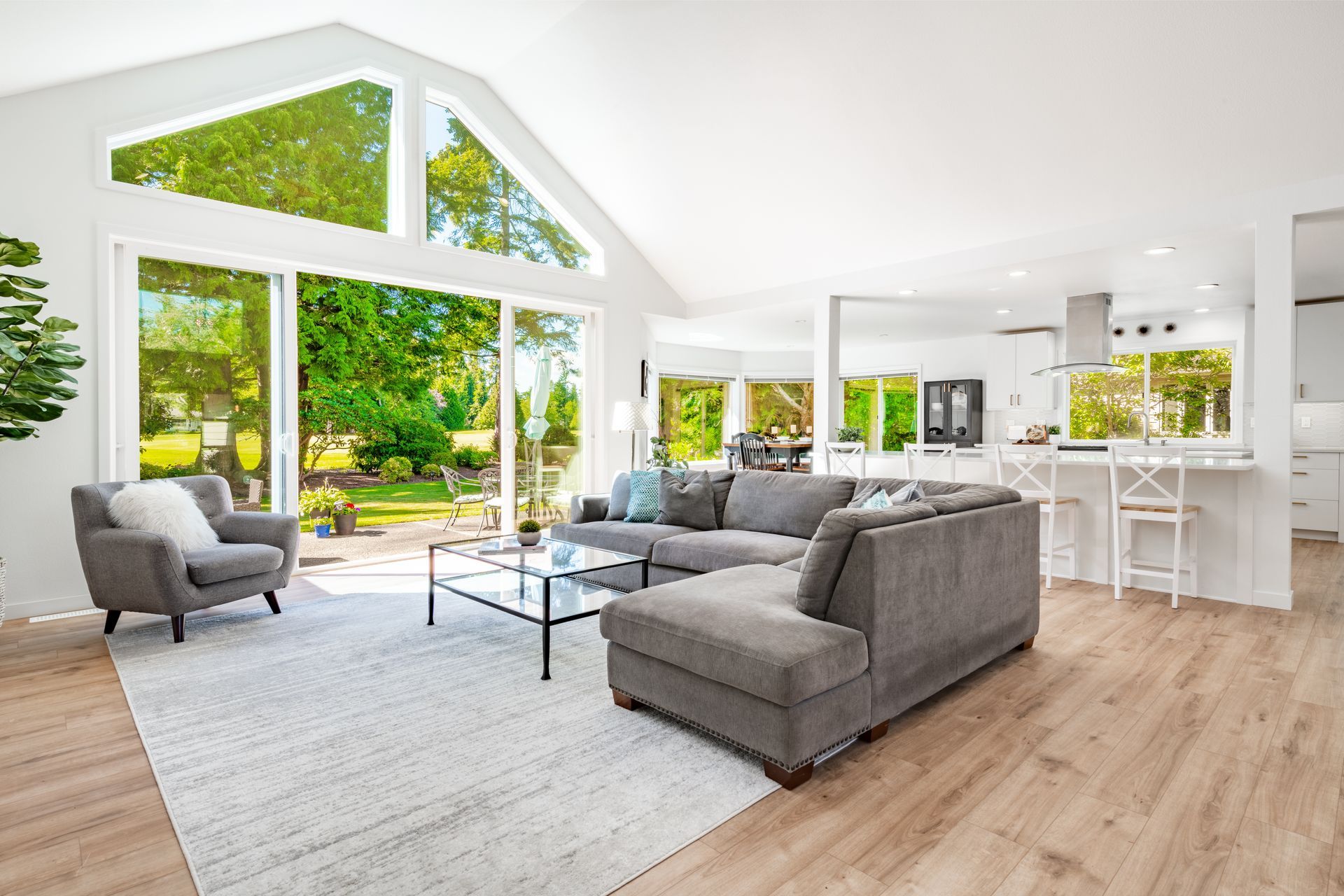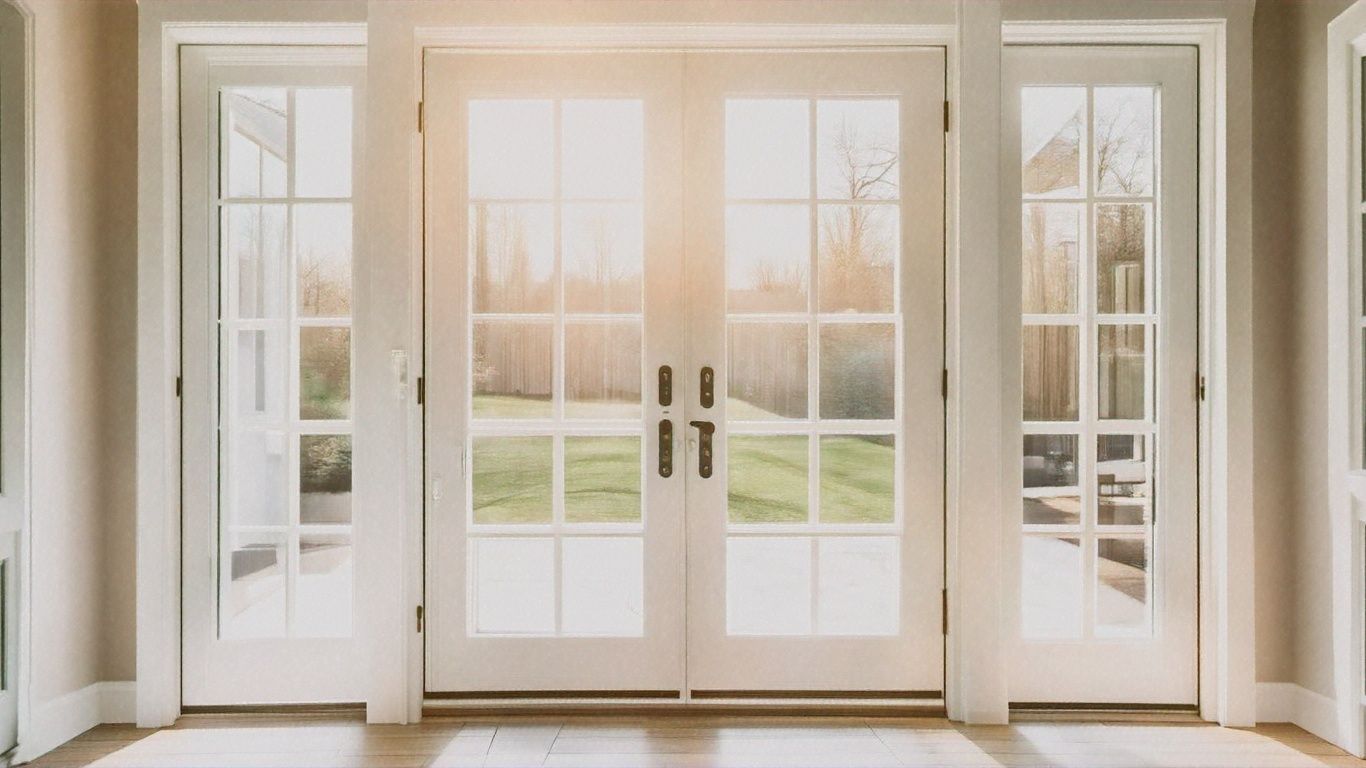Window Specialty Glass - What To Ask Before You Buy
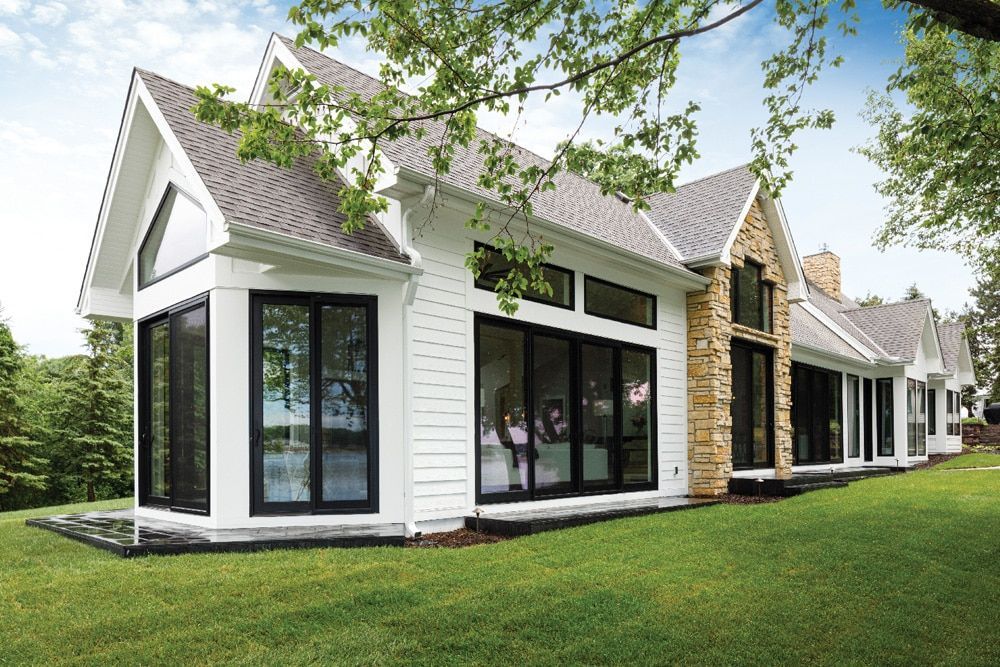
Homeowners today are selecting larger windows as well as increasing the number of windows and glass doors in their homes. Today’s home includes entire window walls, taller doors, and multiple panel openings. In addition, homes are now being built closer together and to noisy roads. What type of window glass options are used in these large windows and glass doors?
You can increase the efficiency of your windows by selecting the right glass. In fact, the world of glass includes, noise reduction, privacy, safety, energy efficiency, condensation resistance options. Educate yourself on your options before you buy.
SOUND ABATEMENT (STC/OITC) GLASS
Our cities, towns and neighborhoods are increasingly noisy places to live due to the faster pace of life, proximity to highways, airports or trains, and increased density of housing. So, it’s little wonder more homeowners and builders are interested in windows and window upgrades that will dampen outdoor sounds.
The question is, do soundproof windows really work?
Sound travels through mechanical waves. When a plane flies over your house the sound reverberates through surrounding particles; including gases, liquids, and solids, which vibrate or collide and pass the sound energy along to our ears. The denser the medium, the slower it will travel and so, the more the sound will be absorbed before it reaches your ears. If you want to select windows that will produce a quieter home, you need to pay attention to the acoustics – the sound control of a window.
The real question is, can windows be made to be acoustically soundproof? Answer, no, however there are techniques for making windows that dampen sound. Have you ever wondered why don’t you hear the airplanes when you’re waiting in the airport lounge?
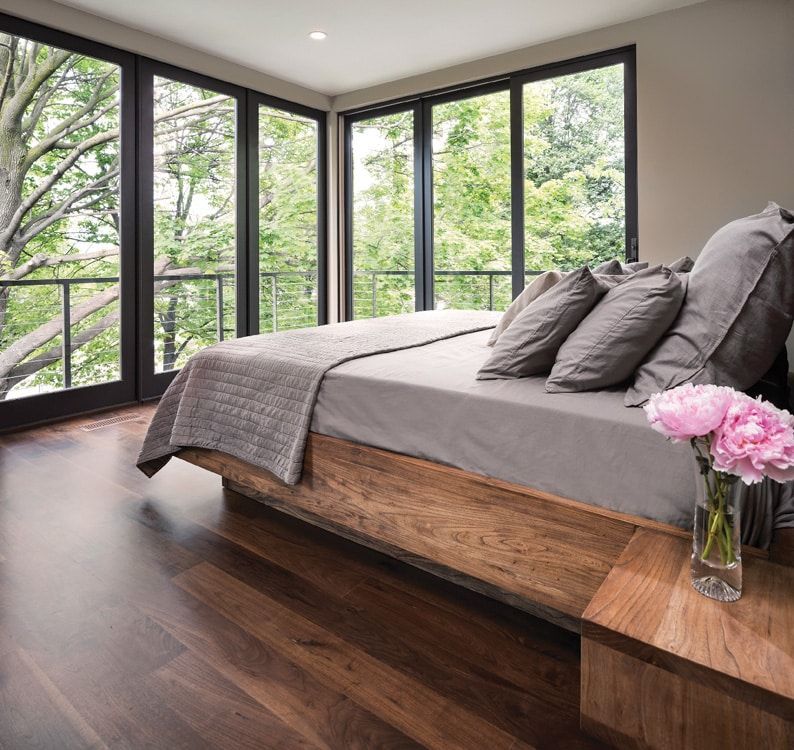
Laminated and Insulating Glass
By itself, glass has very little damping ability. Laminated glass (LG) puts a layer of more viscous material, a plastic, between two lites of glass, which substantially increases the unit’s ability to reduce sound, by breaking up the sound waves as they pass through the glass. A single pane of ¼” laminated glass consists of two 1/8” lites with the plastic interlayer has as much sound blocking ability as ½” lite of monolithic glass.
Insulating glass (IG) consists of two or three panes separated by a gap filled with air or Argon gas. Using glass lites of different sizes, for example one thicker (3/16”) and one thinner (1/16”) lite in an insulated glass construction will further help deaden sound because each lite is “transparent” to a different frequency and each lite will then attenuate the frequency that the other light “passed”. Some experts have specified combining all three features: LG, wider airspace, and different thicknesses to create the maximum sound barrier.
Those airport windows will generally have laminated glass on both sides of the insulated glass unit (IGU) in an aluminum frame with a ‘maximum’ airspace between the lites.
Sound Rating Systems
There are two main ways that building products, including windows, are rated for sound control: Sound Transmission Class (STC) and Outdoor/Indoor Transmission Class (OITC). The higher the number the better the window is at attenuating noise.
STC is a building measure originally designed to measure an object’s ability to attenuate sound across the entire sound frequency. However, STC ratings only give an indication of high frequency noise reduction such as voices and audio. For example, an STC of 25 will allow normal speech to be heard on the other side, while a rating of 60 or higher will insulate against most sounds, making them inaudible from the other side.
OITC ratings are a much better indicator for homeowners of noise reduction because they’re measuring lower frequency noises such as traffic and landscape equipment. Since lower frequency noises are more difficult to reduce, these numbers will be slightly lower than the STC ratings. Aim for upper 30s or more for OITC and STC ratings of 40 or more. Lastly, the construction of a window and the installation also factor in sound control.
Specifying Sound Transmission Class Windows
The ratings of sound atonement consider the entire window, the glass, frame, and other parts. Marvin , along with other manufacturers offer STC/OITC glass upgrades for many of their products. Your Woodland salesperson can provide you with the products rating guides.
Decorative and Privacy Glass
When we think of decorative glass, we usually envision the beautiful patterns and colors primarily used for doors, sidelites and transoms. Decorative glass is a much larger category to include privacy options which are a much-needed option for today’s homes made with larger window and door glass as well as built ever closer to our neighbor’s home.

Known as obscure glass. Options include different opacity levels to obscure or distort the view through them. This glass can be partially or fully opaque. With some varieties, you can still see shapes and colors through the window. Other varieties block the view completely.
For homeowners, these specialty windows offer privacy and security while letting in natural light and eliminating the need for heavy window treatments
Frosted Glass
This is a common type of privacy glass that has a smooth, white appearance and is often called satin glass. Frosted glass is created through sandblasting or acid etching. These windows offer a hazy view and come in a wide range of transparency options. This choice is cost-effective, so they’re a good choice for homeowners on a tight budget.
Ribbed or Bubble Glass
Often called reeded glass, like reed grass, this striped glass is looks textured. The reeds are vertical, and the amount of distortion depends on how wide apart the stripes repeated. Bubble-effect glass typically creates the illusion of raindrops, which is another common name for it. It’s sometimes called raindrop glass. It’s a great natural look popular in bathrooms.
Patterned Glass
Homeowners who want a decorative look while assuring privacy can choose patterned glass. Glass in this category includes geometric shapes, natural forms, and abstract designs. Popular in doors with glass panels, French glass doors and sidelites.
Safety Glass

When should you use safety glass in your home? It’s for any location in your home where window or door glass could break accidently and harm a person. This category of specialty glass is designed to protect your home and your person from window or door glass breakage.
Tempered
Also known as heat-treated glass, tempered glass is specifically fabricated for usage in areas with a high risk for contact and breakage, like showers, doors, or glass near stairs. This glass is more durable than standard glass and does not shatter into large shards when broken, which makes it safer than the commonly used glass. If it does break it will only smash into small bits. Tempered glass has a reputation for toughness, when glass is tempered, it undergoes a process to make it more resilient and shatter resistant. Art glass (decorative glass) used in doors, sidelights and large windows is exempt from safety glazing requirements if it is leaded, decorated or carved in such a way as to make it clearly visible.
How to recognize Tempered Glass
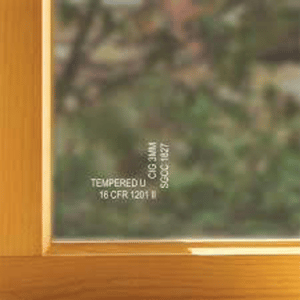
Older windows are unlikely to have a marking. You can tell by the etching certifying it is safety glass in the bottom corner of the glass. Tempered glass must have a small label etched in a corner, officially known as the “glass monogram,” called a “bug” in the construction trades. It identifies the manufacturer name, and the ANSI and CPSC standards under which it was manufactured.
Laminated and Hurricane Impact Glass
Another type of safety and security glass is laminated glass. Hurricane –rated impact glass is comprised of two sheets of glass bonded together with a protective interlayer of plastic that is designed to resist impact from missiles (projectiles) during a hurricane or from a burglary. The safety glass sticks together when broken. This glass is stronger than a car windshield, the glass might shatter if a heavy object is thrown into it, but it won’t break to bits. That makes it less likely that an intruder can shatter the glass and unlock the door or walk through the open pane. A burglar would have to strike the glass with a hammer many times before he had a hope of making a hole large enough to reach into.
This impact resistant glass costs more but it is such a refined design you can hardly tell a hurricane-rated window from a regular window. They’re becoming mainstream and most contractors will install the durable glass if their customers ask for it.
How to recognize Laminated Glass
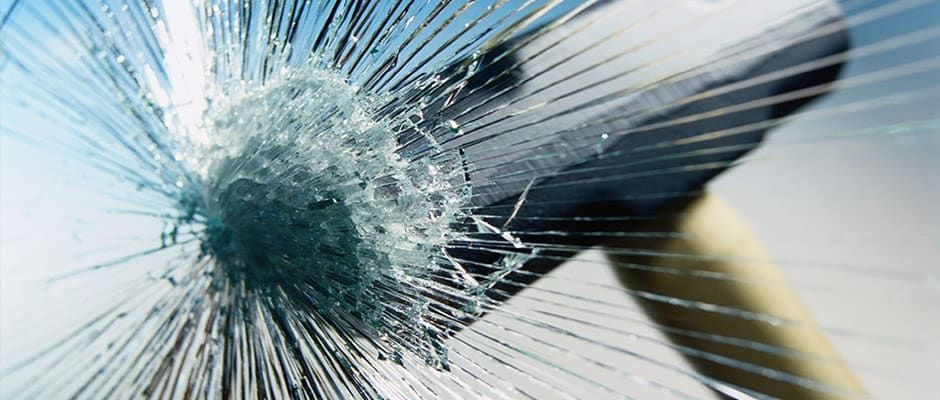
It is more difficult to identify laminated glass than tempered glass. It may not have a bug, because most building codes don’t require it and, if there is a bug, it may reference a DOT (Department of Transportation) approval code. Also, laminated glass can be cut to size after manufacturing, and the bug may have been cut off.
The choice of using tempered or laminated glass to use depends on the application as both meet safety standards required by building codes. For strength and resisting breakage, tempered glass is a good choice. However, for flexibility (it can be cut), security and sound considerations, laminated glass is usually the choice.
Energy Efficiency Glass
Now a standard offering, this specialty glass can be specified to suit your home’s window exposure.
Low-E
Perhaps no term is uttered more frequently, in the world of windows, than Low-E, which stands for low-emissivity glass that is, coatings that slow heat transfer through glass. There are three components to building an energy efficient window, insulating glass, which refers to dual or triple pane, Low E, referring to the reflective coating, and gas fills, that slow the movement of air between the glass improving thermal performance.
Low E coatings range from E1, E2 and E3. Low E1 is recommended for our Northern climate. Low E1 – absorbs maximum amount of light and keeps heat on the side of the glass where it originated which makes it best for Northern climates where heating is prioritized over cooling. E2 and E3 are optimized for warmer climates. There’s an opportunity for homeowners wishing to maximize passive heating and cooling options to specify the glass on each window depending on it’s location and sun exposure.
Older homes with single pane windows that upgrade to Low-E glass are likely to experience twice the insulation value as their single-pane windows, if not more.
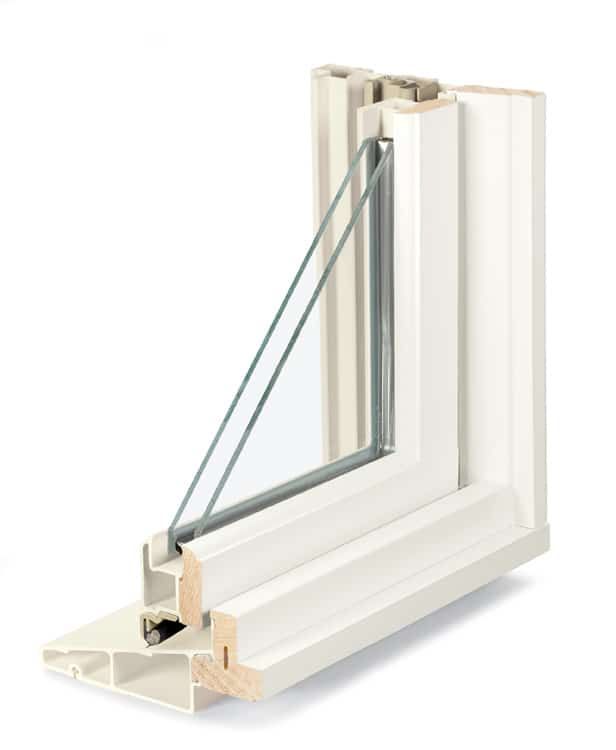
SHGC and U-Factor
Glass is rated by three primary characteristics: U-Factor, Solar Heat Gain (SHGC) and Visible Transmittance . The U factor rates thermal insulation of the window. The lower the U-factor, the better the window is at keeping heat in – particularly important during winter’s heating season. U-Factor is measured between .20 and 1.20. Our Northern climate wants a low U-Factor of < 0.30.
However, our climate needs a higher SHGC. Because the SHGC measures how much solar heat gets inside the house once it reaches the glass. Measured between 0 – 1.0, the lower the number the less heat reaches the house. Therefore, we want a higher SHCG or more heat to enter the house.
Visible Transmittance
VT merely refers to the amount of the light the window allows into the room. A testing body assigns the window a visible transmittance score between 0 and 1. Lower scores, such as .3 or .4 indicate that the windows let in less light than higher scores, such as .6 or .7. Replacement windows with wide sashes, grids, three panes, and low-E coatings will have lower visible transmittance ratings than new construction windows with thinner frames and fewer light obstructions.
Condensation Resistant Glass
Educate yourself about Condensation Resistance or CR. The National Fenestration Rating Council NFC rates a window’s CR, but manufacturers aren’t required to list it on the label, largely because there are still subjective variables that affect CR. If you’re in the market for replacement windows remember to ask about the features that contribute to condensation resistance. For example, our colder climate makes aluminum frames a poor choice, but if you must have this for your modern home make sure the window you choose has thermal breaks. Second, opt for Low-E and argon or krypton gas fills between double or triple panes. Third, ask about warm-edge spacers, which are no-metal or spacers made of less conductive metals.
When buying windows and doors it’s easy to get overwhelmed by the choices and everything there is to learn. Just remember, windows are larger, they are more abundant, housing is denser, and neighborhoods are noisier. You have lots of choices to select specialty glass that will optimize the livability you gain from your new windows.

